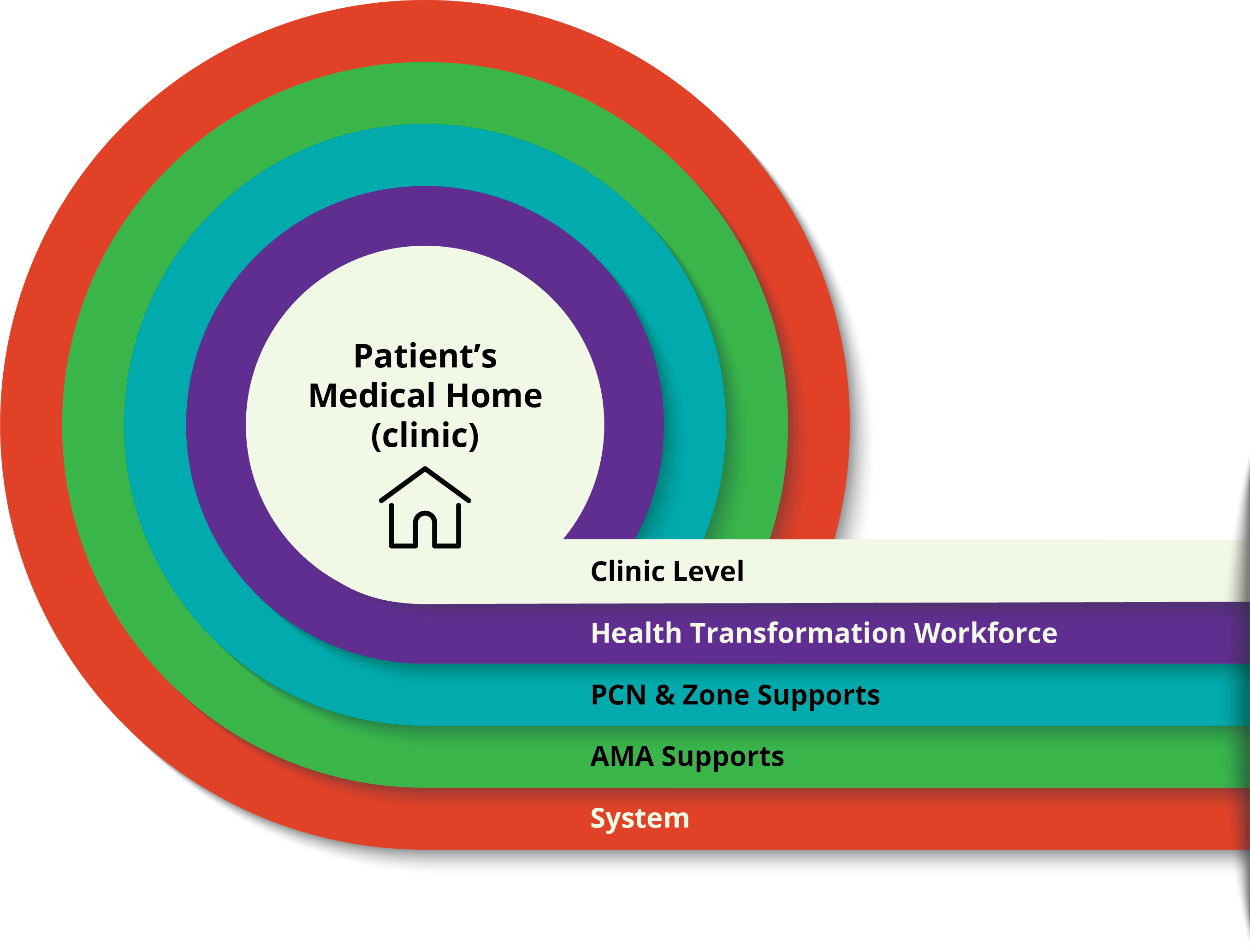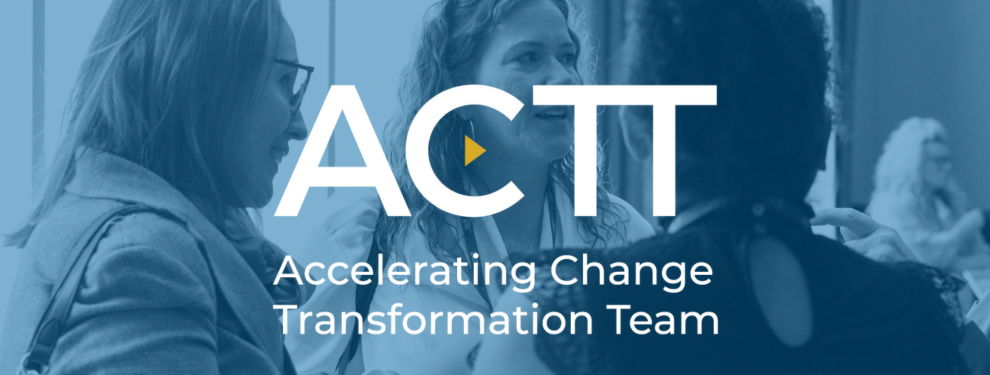The Accelerating Change Transformation Team (ACTT) interacts with and/or supports change Agents throughout the system. The following diagram depicts the ACTT view of change agents operating at different levels of the system and their relation to change at the level of the Patient’s Medical Home in the Health Neighbourhood. These levels are described below, with a further description of the Health Transformation Workforce and PCN & Zone Supports further expanded on later in this section.


All levels of change agents depicted in the diagram exist to support the changes at the level of the Patient’s Medical Home (clinic). The clinic improvement team resides at this level, and some of the potential change agents are physicians, clinic managers, multi-disciplinary team members, other clinic staff, and patient representatives. ACTT does not routinely provide direct support to the clinic level

The health transformation workforce works directly at the PMH/clinic level, supporting the changes toward implementing the Patient’s Medical Home. This currently includes physician champions and practice facilitators. Supporting PCNs with their implementation of an adequately staffed and highly competent health transformation workforce is a key objective of the ACTT Team. This is reflected in the multitude of resources available for this change agent group. See below for additional detail on this group

These change agents include PCN level strategic leaders and human resources who support the operations of the PCN and zones, ultimately supporting the health transformation workforce and clinic level change agents. They include but are not limited to roles such as board representatives, executive directors, EMR specialists & mentors, panel managers, evaluation specialists, communications specialists, and finance specialists. See below for additional detail on this group

These change agents are AMA staff of the ACTT Programs. They offer a variety of training, networks, and other supports to the PCN/Zone supports and health transformation workforce. They also connect with system level change agents

These change agents include government (AH) and other system partners such as AHS, HQCA, ACFP, CPSA, PLP, etc. These partners offer a variety of programs supporting the various levels of change agents. The AMA works collaboratively with these partners to optimize offerings, reduce duplication, and align strategic messaging.
A Deeper Dive: Health Transformation Workforce and PCN & Zone Supports
The Blueprint for Change Agents Advancing Primary Care Transformation in Alberta is focused on the levels of the Health Transformation Workforce and PCN & Zone Supports.
Health Transformation Workforce (AMA working definition)
The health transformation workforce are practice facilitators and physician champions with the defined role and skill to work with community care practices to help them with their incremental transformation toward a Patient’s Medical Home integrated with the Health Neighbourhood.
A physician champion is a physician who sees the intrinsic value of the health care transformation approach and actively engages their peers in this work. Physician champions (PCs) are often early adopters of new approaches to practice change and influence others to participate in these changes. Successful physician champions are characterized by being persuasive, credible, and relatable.
Practice Facilitators are specially trained individuals who work with community care practices to enable meaningful changes designed to improve patients’ outcomes and clinic processes. They help physicians and quality improvement teams develop the skills they need to implement and adapt evidence-based practices to the specific circumstance of their practice environment. The literature also refers to these individuals as improvement coaches and go by many titles throughout Alberta.
PCN Board and Governance Committee members set strategic direction for their PCNs. The direction they provide sets foundation for activities and resourcing to impact service delivery and clinic-level change activities. It is critical for board members to act as agents of change, to fully embrace and direct the PCN as a change organization.
The PCN Executive Director (ED) is primarily responsible for implementing the PCN board strategy. The ED requires a wide breadth of competencies to fulfill their role.
The EMR Specialist role evolved in Alberta PCNs to support member clinics and/or fellow change agents with EMR process changes. A review of practice facilitator competencies shows that it is common for EMR competencies to exist as a part of the practice facilitator role. While many practice facilitators in Alberta PCNs possess EMR competencies, some PCNs have carved out EMR competencies into other individuals that in this Blueprint we categorize as EMR Specialists.
Panel managers are personnel staffed at the clinic who provide support for panel identification, maintenance, and management processes. Several hundred panel manager positions in Alberta are funded by PCNs, with many more funded directly at the clinic level. While the panel manager role is generally technical in nature, the funding arrangement has allowed PCNs to leverage individuals in the role to provide influence and engagement of PMH initiatives. It should be noted that PCNs do not have a standard name for the panel manager role, but the core competencies appear to be fairly standard.
There are a number of functional roles common across many PCNs such as evaluation, communication, finance specialists, as well as a number of director and manager roles. While the individuals who are in these roles can simply fulfil their role, when they mobilize as agents of change, they contribute to the culture of transformation and help to accelerate the pace of change.
